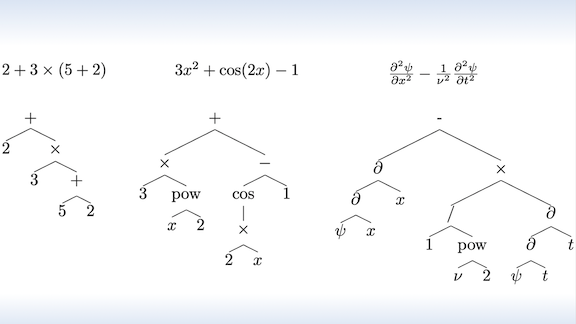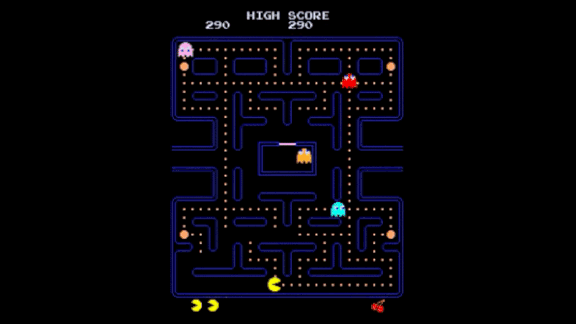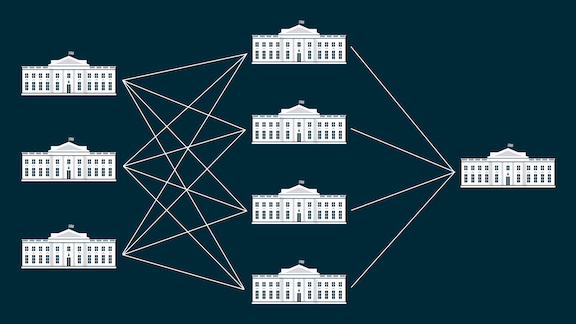Dear friends,
One of the best gifts a friend gave me last year was recommending a book that I subsequently read and loved. She didn’t even have to buy it for me!
The right information at the right time can have a powerful impact. It can alter the course of a project or even a career. No online recommender system today knows you well enough to suggest the thing that’s best for you at this moment. But you may know a friend well enough to do that.
Once, a team I was leading needed more product knowledge. Rather than spend eight hours explaining product management, I spent five minutes asking everyone to read Inspired: How To Create Products Customers Love. They came back with a much better direction for the product.
Is there an educational resource you’d like to recommend to a friend? (Hint, hint: Recommending The Batch makes a wonderful gift.
????)
Keep learning!
Andrew
DeepLearning.ai Exclusive

Working AI: Eat Pray Kaggle
Daniel quit his job as a web developer and set out to break into AI. After a journey through courses, research papers, and competitions, he works at a startup building an NLP-powered chatbot. Read more
News

AI Steals CES
Artificial intelligence was everywhere at the biggest, buzziest consumer-technology showcase in the U.S.
What’s new: AI ruled the convention floor at the annual Consumer Electronics Show in Las Vegas, as numerous media outlets proclaimed. As usual, many products on display were half-baked concepts or solutions looking for problems. (Imagine collecting the training dataset for this cat litter box with scat recognition. On second thought, don’t.) Among the highlights, some were already here, some almost ready, and others still in the lab.
Here: Products currently on the market represent the intersection of practical machine learning and mass-market applications.
- Comma Two upgrades newer cars with semi-autonomous driving capabilities including accelerating, braking, and lane keeping.
- OrCam’s Hear pairs with bluetooth hearing aids to help users pick out individual voices in noisy settings.
- Canon’s Photo Culling plug-in to Adobe’s Lightroom image processing service removes badly focussed and red-eyed photos from image libraries.
Near: Many of the show’s coolest reveals are either coming soon — if all goes well — or available only to deep-pocketed customers.
- Samsung showed off the prototype Ballie, a rolling, spherical personal assistant that follows users around like a puppy, and SelfieType, which turns any surface into a virtual keyboard.
- Agricultural kingpin John Deere presented See and Spray, a coming-soon tractor attachment that uses computer vision to target individual weeds with herbicide (raising the question: Is Big Ag an up-and-coming consumer niche?).
- LG, Samsung, Sony, and just about every other consumer-tech giant debuted AI-enabled 8K televisions that intelligently multiply the number of on-screen pixels on screens bigger than 75 inches. You can buy one today and enjoy better big-screen picture quality, but nobody is making content for them yet.
On the horizon: NEON, a Samsung-backed startup, showed impressively lifelike video imagery of virtual people (shown above). These avatars are meant to be conversational assistants, giving advice on personal fitness, health, or finance, eventually employed in service roles. Their bodies and expressions are based on captured human gestures, with customizable features like eye gaze and eyebrow motion.
We’re thinking: CES 2020 was enthralled by AI. Purveyors of consumer tech must take care, though, to deliver on their promises or risk bringing on hype fatigue.

Neural Networks Study Math
In tasks that involve generating natural language, neural networks often map an input sequence of words to an output sequence of words. Facebook researchers used a similar technique on sequences of mathematical symbols, training a model to map math problems to math solutions.
What’s new: Guillaume Lample and Francois Charton built a sequence-to-sequence model that solves integrals and ordinary differential equations.
Key insight: To apply machine translation to math, an equation must be represented as a sequence of characters that capture its semantics. A mathematical expression represented as a tree — with operators as internal nodes and operands as leaves — maps unambiguously to a sequence. For example, the image above shows the tree for 2 + 3*(5+2). The corresponding sequence is [+ 2 * 3 + 5 2].
How it works: The authors used existing math software to generate datasets consisting of (problem, solution) pairs for integrals and ordinary differential equations. For each type of problem, they trained a separate transformer model to predict solutions.
- For function integration, the authors generated three datasets by differentiating a proposed solution, integrating a proposed problem (using SymPy), and integration by parts.
- Similarly, they generated datasets for first- and second-order ordinary differential equations starting with randomly generated functions.
- The models presented their results using a beam search with beam sizes [1, 10, 50]. This allowed them to consider a greater variety of possible solutions before making a final decision.
- Since solutions to problems of these types are easy to verify, the model was able to validate its output. In many cases, all solutions in the beam were equivalent.
Results: The transformer model beat Mathematica, Matlab, and Maple on integration for the dataset generated by differentiating the solution (98.4 percent accuracy with beam size 1 compared to 84 percent for Mathematica, the best of those three math apps). It also beat the math software on differential equations with beam sizes 10 and 50. The model solved integration problems in the test set that SymPy couldn’t, showing that it generalized beyond the program used to generate its training dataset.
Why it matters: Transformer networks can solve problems that dedicated commercial math programs can’t. That said, their solutions may not be 100 percent accurate.
We’re thinking: Beating Mathematica is a remarkable result. Assuming the data distributions for training and test represented the most common problems in integrals and ordinary differential equations, this approach could open a vast frontier to state-of-the-art machine learning.

Here Be Dragons
AI is contributing to paintings, music, and now a whimsical fantasy video.
What’s new: The Squire is an amateur romp through a snowy realm of knights in armor and damsels in distress. The script was composed by AI Dungeon 2, an interactive text-adventure game based on the GPT-2 language model.
How it works: Filmmakers Josh Johr and Dominick Todero began like any other AI Dungeon 2 player: By choosing a character (squire, mage, and so on) and setting (forest, dungeon). The program generated an internal context statement and fed it to the text engine, which responded: “You are Jake, a squire living in the kingdom of Larion…” It asked them periodically for input and generated text to advance the story. When the program declared, “GAME OVER!,” they set about planning the production.
- Unlike earlier text-adventure games, AI Dungeon 2 has no rules for how players can respond to prompts and no pre-programmed outcomes — everything is generated on the fly. The game’s creator, Nick Walton, fine-tuned the 1.5 billion-parameter version of GPT-2 on 30 megabytes of text scraped from an online choose-your-own-adventure forum.
- The game is prone to unexpected and occasionally nonsensical twists, such as when roadside bandits hand their sword to the befuddled Squire simply because he asks them to. But it anchors each session in its setting and narrative by feeding GPT-2 the previous 10 prompts, along with the original context statement, each time the player enters a new prompt, Walton told Towards Data Science.
- Inspired by the model CTRL, he imposed a penalty whenever the system reused previously generated words. That keeps the text generator from repeating itself, which can be a problem with the latest language models.
We’re thinking: In the early days of generated music, some listeners enjoyed the jarring notes that computers often came up with. We’re still in the early days of generated narrative, but the results, for all their screwball turns, can be delightful.
A MESSAGE FROM DEEPLEARNING.AI

How can you advance your AI career as a machine learning engineer, data scientist, or software engineer? This report from Workera, a deeplearning.ai company, walks you through the different career paths you can take, the tasks you’ll work on, and the skills recruiters are looking for in each role. Download the report

Forecasting Blockbusters
Could a black box become Hollywood’s crystal ball?
What’s new: Warner Bros. is using an AI-powered tool that predicts a movie’s box-office success, according to Hollywood Reporter.
How it works: Cinelytic promotes its software as a project-management platform to help movie execs make decisions throughout a film’s lifecycle. The company says it’s looking not to automate decision making but to make human managers more effective.
- The model draws on historical data including financial performance of a slew of films in various geographic markets along with their stars, genres, and other key information.
- Users input details of the film they’re considering, and the tool predicts foreign and domestic box office sales plus DVD/Blu-ray, cable, and broadcast revenue. By toggling parameters such as release date or key talent, execs can see how the changes might impact the numbers.
- Beside Warner Bros., the company’s clients include Ingenious Media (Avatar), Productivity Media, and STX.
Behind the news: Hollywood honchos have been experimenting with AI to help them home in on blockbusters and award winners for a few years. A growing number of companies are after a piece of the action.
- Scriptbook, a Belgian company, predicts whether a movie will turn a profit by analyzing its script. The company said it has numerous Hollywood clients.
- The Israeli company Vault predicts a movie’s success among various demographic groups by analyzing how trailers perform online.
- 20th Century Fox published its own research on a machine learning model that analyzes audience reaction to scenes and objects in a trailer.
Why it matters: Movies can cost hundreds of millions of dollars to make, so producers are eager for any insight that can return their investment at the box office. Predictive systems could be especially helpful around film festivals, when executives often have to jump into fast-moving bidding wars.
We’re thinking: This kind of approach lends itself to many industries. We look forward to one for publishing AI newsletters.

Two-Way Winner
AlphaGo Zero demonstrates superhuman performance playing Go, chess, and shogi. Models like R2D2 do the same playing classic Atari titles. A new approach to deep reinforcement learning is the first to achieve state-of-the-art results playing both board and video games.
What’s new: DeepMind researchers Julian Schrittwieser, Ioannis Antonoglou, and Thomas Hubert adapted techniques from AlphaGo Zero to develop MuZero. While AlphaGo Zero requires knowledge of game rules, MuZero does not.
Key insight: Board games like Go or chess have two players, and the only outcomes are win or lose. Video games may have only one player and offer immediate rewards. MuZero mastered these diverse conditions by learning a world model and employing AlphaGo Zero-style search.
How it works: At each step in the game, MuZero considers the immediate outcome of a given move and the probability of winning if it is made. It analyzes potential consequences through a series of components.
- A state-representation submodel extracts information about the current game state and uses it to form a simplified description of that state.
- Based on the simplified state description, the value-and-policy submodel predicts the optimal move to make and the expected reward for making it.
- Similarly, the dynamics-and-reward submodel predicts the next game state and the immediate reward for taking a particular action.
- At each timestep, the value-and-policy module searches potential outcomes multiple steps ahead, and the dynamics-and-reward submodel produces many future samples. Then MuZero performs the action likely to yield the best overall rewards and value.
Results: MuZero matched AlphaZero’s performance in chess, shogi, and Go with slightly less computation at each timestep. In Atari games, MuZero beat the previous state-of-the-art median score across 57 titles by 5 percent in one-tenth of the training time.
Why it matters: Previous models either perform precise planning (best for board games) or learn complicated dynamics (best for video games). MuZero shows that a single model can do both.
We’re thinking: Stellar performance in games attracts lots of attention, but making the translation to significant impact on real-world tasks has been a challenge. MuZero addresses some of the weaknesses of previous algorithms — a step toward making a difference beyond games.

White House: “Go Easy on AI”
The Trump administration announced a hands-off policy for regulating artificial intelligence.
What’s new: The White House unveiled an executive order instructing federal agencies to minimize rule-making related to AI businesses.
What it says: The order guides regulators to craft rules that protect civil liberties, consider scientific research, and encourage public input while avoiding rules that might hinder innovation or weigh on company finances.
- The directive asks agencies to avoid making rules whenever possible, and instead establish voluntary standards or issue non-binding statements. When regs are unavoidable or already exist, agencies should shield innovators via pilot programs or waivers.
- Federal agencies are encouraged to “use their authority to address inconsistent, burdensome, and duplicative state laws that prevent the emergence of a national market.” This could add fuel to legal battles over state laws like Illinois’ BIPA, which is at the center of a class-action lawsuit charging that Facebook’s face recognition models violate civil liberties.
- The guidelines will take effect after a 60-day public comment period.
Behind the news: Six members of the G7 group of the world’s leading economies have been working to build consensus on a set of international AI guidelines since 2018. The U.S. is the only member to reject them. Before the executive order was issued, US Chief Technology Officer Michael Kratsios told Wired that the guidance was part of a broader effort to inject free market principles into international AI standards, as opposed to top-down direction.
Why it matters: Clear regulations allow companies to innovate without worrying that the government might suddenly change the rules. They also provide boundaries for generally accepted uses of new technology.
We’re thinking: We welcome government actions that help AI reach the market while protecting citizens. Further policies that would help the field grow include investing in education and welcoming the immigration of talented scientists and engineers.
